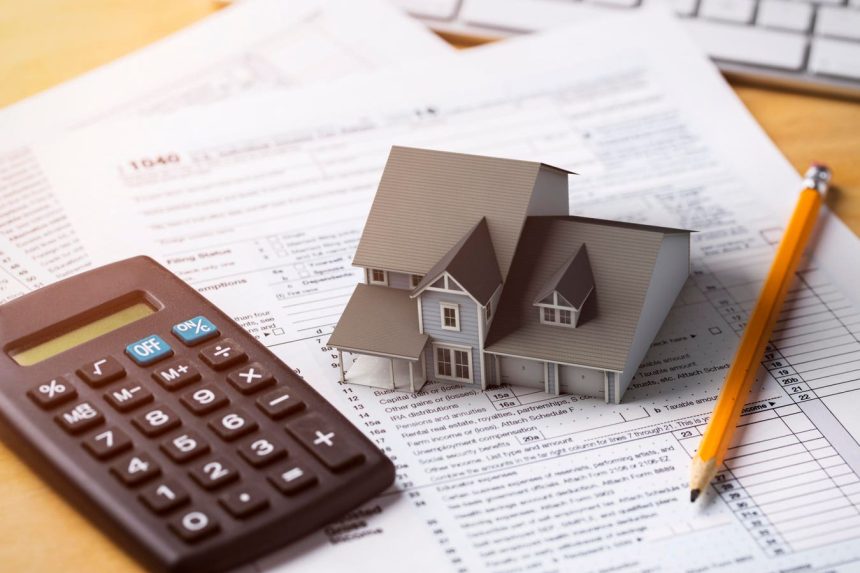If there’s one thing everyone agrees on, it’s that housing is unaffordable. Case in point: the National Association of Home Builders said in March that 60% of U.S. households can’t afford a $300,000 home at a time when the median price is now well above $400,000. For most families, the math simply doesn’t work.
There are a lot of reasons why. Zoning rules make it hard to build. Lumber and concrete cost more. Builders can’t hire enough workers. Mortgage rates are high, and many existing owners are locked into loans at half today’s going rate. All of this keeps supply low. According to realtor.com, the number of monthly active listings nationwide only climbed back above one million in May. Before the pandemic, that figure hadn’t dipped below that level since at least 2016.
But there’s another piece of the puzzle.
Housing prices have soared since the 1990s, but the tax rules that govern selling a home haven’t changed a bit. The capital gains exclusion for primary residences is still capped at $250,000 for single filers and $500,000 for married couples. For many long-time owners, especially seniors, that means selling triggers a steep tax bill. Downsizing becomes less about preference and more about what they can afford after taxes.
Economists at Moody’s, the credit rating bureau, put numbers on the effect in a report released this month.
The capital gains exclusion was created in 1997. Before that, owners could defer paying tax if they rolled proceeds into a new home of equal or greater value, and those who were over age 55 could also use a one-time $125,000 gains exclusion if they bought a cheaper house. Congress simplified matters by setting a flat $250,000 for single filers, $500,000 for married couples maximum exclusion from capital gains, with no rollover provision. The change reduced paperwork for homeowners (who no longer had to track rolled over gain from house to house to house) and the IRS alike. But lawmakers didn’t index the exclusion cap to overall inflation, let alone to the increase in housing prices. Nearly three decades later, the exclusion is worth far less in real terms. Had it kept up with the increase in house prices, Moody’s calculates the exclusion would now be $885,000 for singles and $1,775,000 for couples. Had it simply kept up with inflation, it would be $500,000 for single filers and $1 million for couples.
Moody’s shows how this has distorted the market.
Empty-nesters make up a large share of households sitting on oversized homes. Nearly 6 million households headed by people 65 and older live in houses larger than 2,500 square feet. Many would prefer smaller, easier to maintain places. Yet selling could mean owing $100,000 or more in taxes on a modest home in a high-cost market. The incentive then is to stay put until death, when heirs inherit with a step-up in basis, meaning they can sell immediately without owing any capital gains taxes. Meanwhile, younger families remain squeezed into starter homes, and first-time buyers struggle to break in.
The report estimates overhoused seniors spend $3,000 to $5,000 more per year on maintenance, utilities, and taxes than they would in a smaller place. In aggregate, that’s $20 to $30 billion a year in unnecessary costs for seniors. At the same time, underhoused families face stress, lower educational outcomes, and poorer health. The misallocation reverberates across the economy by reducing labor mobility and slowing job growth in dynamic metro areas.
At first glance, one might assume higher-income households benefit the most from bigger exclusions. That’s not the reality, however.
Moody’s points out that many of the people who pay taxes above today’s caps are not wealthy. Widows, for example, have just two years to sell after the death of a spouse to keep the full $500,000 exclusion. (Offsetting that, however, is the fact that the widow gets a permanent step up in basis on the half of the house attributed to the late husband, assuming it was jointly held.)
Middle-class owners in high-cost states like California or Massachusetts are also hit, even if their incomes are modest. In fact, an earlier IRS study found that 20% to 25% of the tax collected under today’s rules would come from filers with incomes below $20,000 in 1995-1996. By contrast, wealthier owners often have the flexibility to avoid tax by timing sales, moving more frequently (which means less time for home values to appreciate, keeping the gains from each sale under the cap), or passing homes to heirs. The upshot: the burden often falls on households least able to manage it.
“Although reforming capital gains taxes alone won’t resolve the issue, it can be a component of a broader set of solutions,” says Cristian deRitis, deputy chief economist at Moody’s and the study’s coauthor alongside chief economist Mark Zandi. Policymakers, deRitis says, are limited in what they can do at the federal level to fix zoning and supply. Changing capital gains treatment is one of the few levers at their disposal.
Congress has tried to raise the limits before. The Congressional Research Service, the non-partisan think tank for Congress, notes multiple attempts since 1997, some to index the caps, others to create special relief for seniors. In this Congress, two bills are on the table. The More Homes on the Market Act (H.R. 1340), introduced by Rep. Jimmy Panetta, a Democrat from California, would double the exclusions and index them for inflation. The No Tax on Home Sales Act (H.R. 4327), sponsored by Rep. Marjorie Taylor Greene, a Republican from Georgia, would scrap the ceiling altogether.
The White House has noticed. In July, President Trump was asked about the Greene bill. “We’re thinking about that,” he said, before pivoting to his familiar theme on cutting interest rates. “If the Fed would lower the rates we wouldn’t even have to do that. But we are thinking about no tax on capital gains on houses.”
Moody’s analysis suggests either move would come with trade-offs. Eliminating the cap could free up hundreds of thousands of homes, boosting local tax revenues and helping unclog the market. But it could also create more competition at the low end as downsizers bid against first-time buyers.
Changes to the tax code are notorious for their unforeseen consequences. For example, the 1986 Tax Reform Act’s elimination of credit card interest deductions created a boom in home equity loans. In the long run, further privileging housing as a tax shelter could push prices higher. That’s the paradox. Raising or eliminating the exclusion could be a godsend to people stuck in houses they no longer want. It could also help ease the shortage by adding more inventory. But it could just as easily backfire, inflating demand and making homes more expensive again.
More from Forbes
Read the full article here














